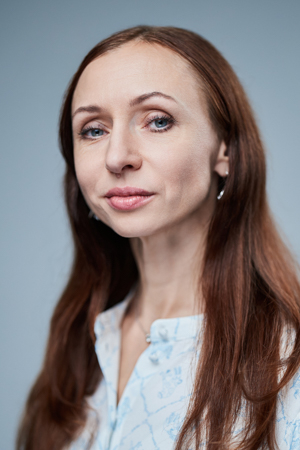
8 January 2026 |
She has long deserved the title of genius. Her mastery has been honed to the degree that it is not just powerful, but meaningful too. She also possesses that which may be seen in Balanchine’s productions of Petipa: refinement in ballet is a ‘dancer-proof’ thing, the plastique is emotional in itself. Her character suits Aurora. Or Zoya in Yakobson’s The Bedbug. Osmolkina has the rare gift for acting where her positive heroines are not exactly more vivid but definitely no less interesting than her tragic or negative roles. Her Shyrin is the best today and, it would appear, not just at the Mariinsky Theatre. In The Legend of Love Osmolkina has a dazzling duet with Ulyana Lopatkina: here there are no questions as to why Ferkhad has fallen in love with Shyrin and why Mekhmeneh Bahnu is the Queen.
Kultura
Yekaterina Osmolkina was an absolutely magnificent Flore: her heroine saw herself as an adornment and was proud of the fact. A brilliant and carefree technique, as well as a brilliant sense of style.
Vremya Novostei
Osmolkina appears to equally brilliant acclaim in the most diverse roles, and the grotesque of her Die Puppenfee may be compared with her stunning lyricism in Giselle. Yekaterina performed the pas de deux in Act II of this ballet with this year’s Spirit of Dance winner Vladimir Shklyarov in such style that the balletomanes had tears in their eyes.
Literaturnaya Gazeta
• Honoured Artist of Russia.
• Prize-winner at the Vaganova-prix competition (St Petersburg, 1998).
• Prize-winner at the International Ballet Competition (Seoul, 2004).
• Recipient of the Golden Sophit, St Petersburg´s highest theatre prize (2006).
Born in Kishinev (Moldova).
Graduated from the VaganovaBallet Academy (class of Professor Inna Zubkovskaya).
Joined the Mariinsky Ballet in 1999.
Repertoire includes:
La Sylphide (the Sylph); choreography by August Bournonville, revised version by Elsa-Marianne von Rosen,
Giselle (Giselle, Monna, Zulma, Classical Duet); choreography by Jean Coralli, Jules Perrot and Marius Petipa,
Swan Lake (Odette-Odile, Friends of the Prince, Two Swans); choreography by Marius Petipa and Lev Ivanov, revised version by Konstantin Sergeyev,
Le Corsaire (Gulnare); production by Pyotr Gusev after the composition and choreography of Marius Petipa,
La Bayadère (Gamzatti, D’Jampe, Grand pas classique); choreography by Marius Petipa, revised version by Vladimir Ponomarev and Vakhtang Chabukiani,
The Sleeping Beauty (Princess Aurora, Silver Fairy, Generosity Fairy, Diamond Fairy, Princess Florine); choreography by Marius Petipa, revised version by Konstantin Sergeyev,
Le Réveil de Flore (Flore); choreography by Marius Petipa, reconstruction of the 1894 production, staged by Sergei Vikharev,
Raymonda (Raymonda, Clemance, Henrietta); choreography by Marius Petipa, revised version by Konstantin Sergeyev,
“Paquita” Grand pas (Variation); choreography by Marius Petipa,
Pas de deux from the ballet The Talisman; choreography by Marius Petipa,
Don Quixote (Kitri, Queen of the Dryads, Street Dancer, Flower Girl, Variation in Act IV); choreography by Alexander Gorsky based on Marius Petipa’s production,
Michel Fokine’s ballets Chopiniana (Nocturne, Eleventh Waltz, Mazurka, First Waltz), Le Spectre de la rose (the Young Lady) and Pétrouchka (the Friend of an Elegant Lady),
George Balanchine’s ballets Apollo (Terpsichore), Serenade, Piano Concerto No 2 (Ballet Imperial), The Four Temperaments, Theme and Variations, Jewels (Emeralds, Diamonds), Symphony in C (I. Allegro vivo, III. Allegro vivace), A Midsummer Night’s Dream (Pas de deux from Act II) and Tchaikovsky Pas de Deux,
The Fountain of Bakhchisarai (Maria); choreography by Rostislav Zakharov,
Romeo and Juliet (Juliet, Juliet’s Companion); choreography by Leonid Lavrovsky,
The Nutcracker (Masha); choreography by Vasily Vainonen,
Yuri Grigorovich's ballets The Stone Flower (Katerina), The Legend of Love (Shyrin, Shyrin’s Friends, Gold Dance),
The Young Lady and the Hooligan (the Young Lady); choreography by Konstantin Boyarsky,
Leningrad Symphony (the Girl); scenario and choreography by Igor Belsky,
Études; choreography by Harald Lander,
Manon (Lescaut’s Lover); choreography by Kenneth MacMillan,
Cinderella (Cinderella) and The Little Humpbacked Horse (Tsar Maiden),
The Magic Nut (Frog); production by Mihail Chemiakin, choreography by Donvena Pandoursky,
The Nutcracker (Masha, the Nutcracker’s Sisters, a Sutler, Chinese Dance, Waltz of the Flowers) and Princess Pirlipat, or Worthiness Punished (Spanish Rat Dance); production by Mihail Chemiakin, choreography by Kirill Simonov,
The Vertiginous Thrill of Exactitude; choreography by William Forsythe,
Ondine (Giannina); choreography by Pierre Lacotte,
Aria Suspended (Soloist); choreography by Peter Quanz,
The Bronze Horseman (Parasha); choreography by Yuri Smekalov,
Russian Overture; choreography by Maxim Petrov.
Repertoire also includes:
Don Quixote (Street Dancer); choreography by Alexander Gorsky based on Marius Petipa’s production,
The Bedbug (Zoya); choreography by Leonid Yakobson,
Lulu. Dream of an Anti-Star; choreography by Giuliano Peparini,
Come in!; choreography by Kirill Simonov,
Connections; choreography by Ilya Zhivoi,
Celestial; choreography by Garrett Smith,
Divertimento, Concertino bianco; choreography by Dmitry Pimonov.
During the Stars of the White Nights festival in 2008 she appeared in the gala concert Great Ballerinas of the Mariinsky Theatre.